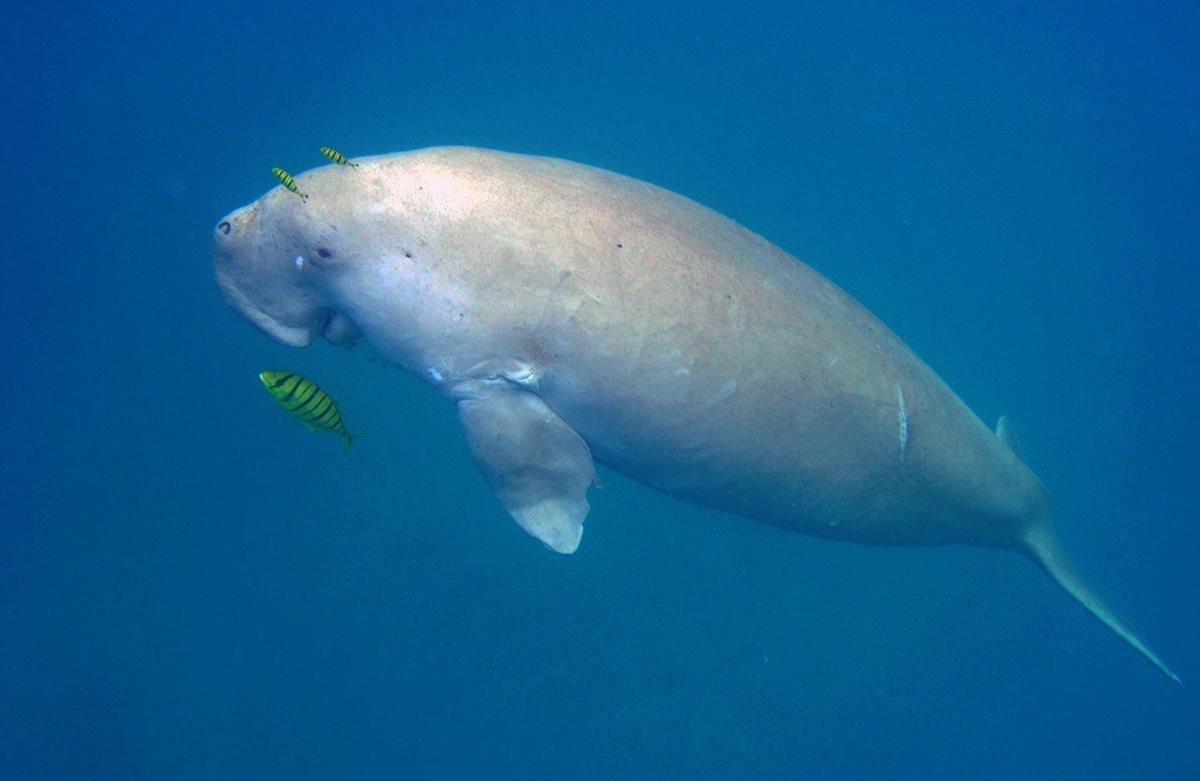Context:
The International Union for Conservation of Nature (IUCN) formally adopted Motion 025 at the IUCN World Conservation Congress 2025, recognizing India’s first Dugong Conservation Reserve in Palk Bay, Tamil Nadu, as a model for marine biodiversity conservation.
Key Features of the Dugong Conservation Reserve:
|
Aspect |
Details |
|
Legal Basis / Notification |
The Dugong Conservation Reserve was notified in September 2022 under the Wildlife Protection Act, 1972. |
|
Location & Size |
The reserve covers 448.34 sq km in the northern Palk Bay, spanning coastal waters of Thanjavur and Pudukkottai districts, Tamil Nadu. |
|
Habitat |
It contains over 12,250 hectares of seagrass meadows, which are critical feeding grounds for Dugong dugon. |
|
Species of Concern |
Dugong dugon (commonly called dugong or “sea cow”), listed as Vulnerable by IUCN Red List. |
Significance of IUCN Recognition:
-
- Global endorsement: Elevates the reserve as a globally‑recognized model, which can attract international attention, funding, technical support.
- Conservation leverage: Helps highlight threats to dugongs (habitat loss, fishing nets, pollution, climate change) and underscores urgent action.
- Replicable model: Encourages adoption of similar marine conservation efforts elsewhere in India and in the Indian Ocean region. The IUCN motion explicitly calls for replicating this model.
- Global endorsement: Elevates the reserve as a globally‑recognized model, which can attract international attention, funding, technical support.
About Dugongs in India
Dugongs (Dugong dugon), often called “sea cows,” are marine mammals that eat seagrasses and live in shallow coastal waters. India is home to small populations of them, but these numbers are falling, and several conservation steps have been taken to try and reverse the decline.
Conservation Status & Legal Protection
|
Legal / Conservation Listing |
What It Means |
|
IUCN Red List: Vulnerable** |
Dugong is considered globally at risk; population declining. |
|
CITES: Appendix I |
Highest protection under trade law; international trade in dugongs or their parts is mostly prohibited. |
|
Wildlife (Protection) Act, 1972 (India): Schedule I |
The strictest legal protection in India; hunting or harming dugongs is banned. |
Threats & Challenges:
-
- Dugongs are highly vulnerable due to habitat degradation, especially loss or damage of seagrass meadows.
- Unsustainable fishing practices—bycatch in nets, entanglements—pose a serious risk.
- Pollution (marine pollution, sedimentation etc.) and climate change (sea temperature rise, sea level rise) threaten both dugong populations and health of seagrass beds.
- Low reproductive rate of dugongs means population recovery is slow.
- Dugongs are highly vulnerable due to habitat degradation, especially loss or damage of seagrass meadows.
Conclusion:
The IUCN recognition of the Palk Bay Dugong Conservation Reserve is a landmark moment for marine conservation in India. It reinforces that well‑designed, locally inclusive conservation efforts can gain global recognition, potentially serving as models for other marine species and habitats under pressure. As pressures from human activity, climate change, and environmental degradation intensify, such reserves become critical not just for species protection but for broader ecosystem health, livelihoods, and climatic resilience.







